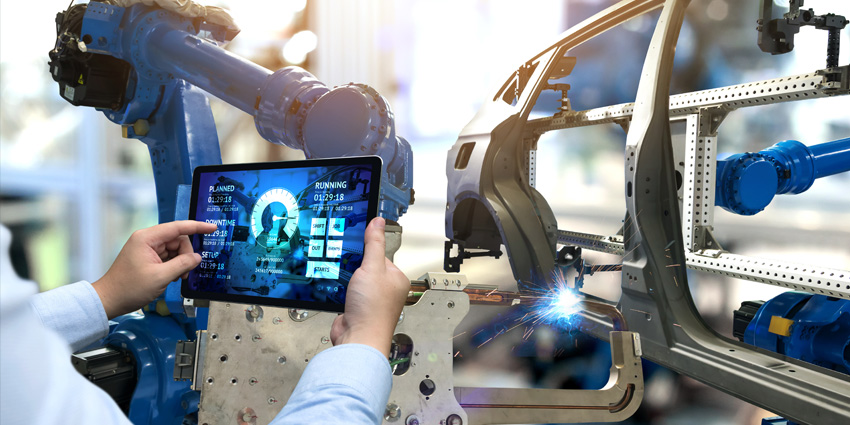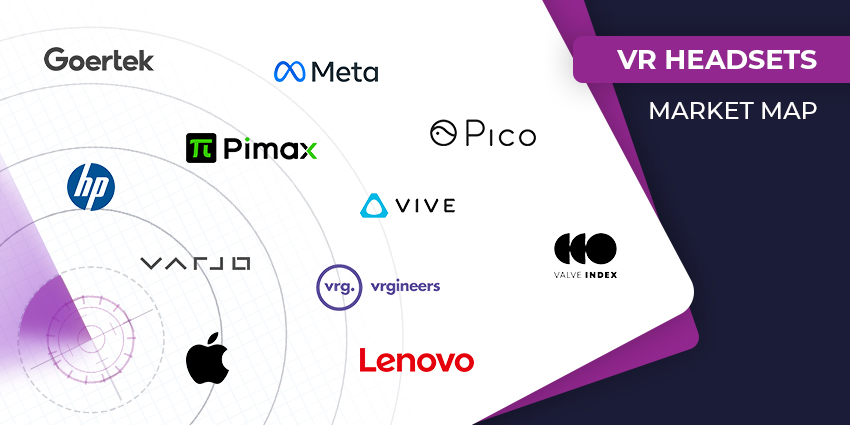Imagine a world where you can experiment with the features of your new car from the comfort of your new home or see all the information you need when driving projected on your windscreen. The future of XR (extended reality) in the automotive industry is defined by meaningful, engaging experiences intended to make us safer on the road and improve how we travel.
Already, we’ve seen leading companies in the automotive landscape experimenting with what’s possible in XR. Maruti Suzuki set up a chain of simulation-based training centres in India, while Ford created a virtual laboratory for designing prototypes.
Let’s take a closer look at how XR influences the automotive industry today.
The Evolution of XR in the Automotive Industry
XR, from mixed reality training experiences to VR production processes, has a lot of value to bring to the automotive industry. Even before many other industries began to explore the potential of extended reality, automobile companies were looking for ways to save time and money on vehicle production.
Mixed reality tools and VR environments are ideally suited for blueprints and prototyping in an environment where working with physical resources would be extremely expensive. XR can also help companies in the automotive landscape unlock safer training environments. Just some of the ways XR is influencing the automotive industry today include:
- Enhanced training opportunities: Mixed Reality, Virtual Reality, and Augmented Reality experiences can help vehicle operators master their driving skills wherever they are. Pilots and drivers responsible for complex vehicles like tanks and military solutions can undergo training from their homes. Companies like Varjo Aero and Boeing have already experimented with on-the-go virtual training experiences.
- Improved customer experiences: XR solutions are ideal for enhancing the customer experience, particularly in an environment where a car might not always be available in a showroom for a client to explore. AR and VR offerings can allow customers to experiment with the features of a new vehicle from a distance in a safe environment.
- Better troubleshooting opportunities: Imagine a mechanic can troubleshoot issues with your car from a distance rather than towing your vehicle into a store. This could be an option for a future of extended reality. Porsche technicians have already begun to leverage AR glasses to see schematic illustrations of vehicles in real time, leading to a 40% reduction in service resolution time.
- More vital collaboration: True innovation in any industry happens when people work more effectively together. In the XR landscape, team members can work together on everything from designing new prototypes to addressing potential problems with car performance. Mechanics could even use AR glasses to get guidance and support from manufacturers when working on cars.
Trends Driving XR in Field Services
Only a few years ago, in 2019, VR in the automotive market was valued at around $759.3 million. Experts predict the market could reach an incredible value of $14.7 billion by 2027. In recent years, companies have discovered how important it is to leverage the latest technology to minimise the costs of designing new vehicles and improve productivity.
During the pandemic, a large number of companies initially started to experiment with the possibilities of XR. Since then, interest in this technology has only continued to grow. As we move ahead into the future of the automotive industry, we can expect to see trends like:
- Virtual prototyping and digital twins: Producing physical versions of vehicle prototypes is often expensive and time-consuming. Not to mention, the use of various resources has a direct impact on the planet. With extended reality, companies can create digital twins of potential products and use apps to complete designs in a virtual world. Prototyping in XR substantially reduces costs and allows employees to experiment more rapidly with design ideas. Companies like Ford already use VR in prototyping.
- Self-driving cars: It might be a while before we all can access fully autonomous vehicles. Before we can reach this point in the future of the automotive landscape, vehicle systems need to learn how to react to various situations. Automotive VR can allow companies to simulate the test-driving experience for AI and machine learning algorithms. This helps to cut expenses on repairs and fuel for testing in the real world.
- Intelligent terrain mapping: Mercedes Benz introduced “next level” augmented reality terrain mapping in 2020. This solution implements AR navigation into a screen environment on the dashboard so that customers can access more valuable information in real time. AR and MR technology could bring essential heads-up display information into your windscreen for real-time directions, guidance, and advice on maintaining safety.
- Intuitive road safety: By bringing more information into the area in front of your face when you’re driving, extended reality solutions can improve the safety of drivers on the open road. These tools can help with automated parking support to ensure users can adequately measure the distance between themselves and another car. Access to AR and MR solutions means it’s easier to avoid users accessing their smartphones and other distracting devices when behind the wheel.
- Virtual showrooms and the metaverse: Virtual showrooms have already begun to impact CX in the digital world. As we move ahead into the era of the metaverse, we could see companies building even more immersive experiences for customers checking out the latest technology. Companies could even create virtual versions of products for customers to “own and drive” in-game environments.
Reaching a Future of XR in Automotive
There are countless examples of automotive companies already experimenting with the possibilities of an XR-enhanced future. With solutions emerging for training and development, there’s no limit to what we might be able to accomplish in the future.
However, there are some challenges to overcome first. For instance, developers must ensure AR windscreens and MR experiences aren’t too distracting for drivers behind the wheel. Moreover, apps and tools for building in VR will need to be intuitive enough to ensure team adoption. If we can overcome these challenges, a future in XR automotive experiences may not be too far away.







